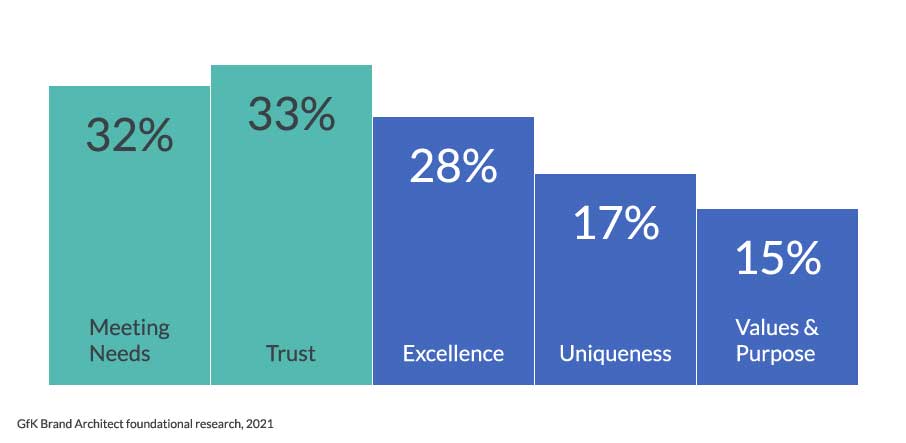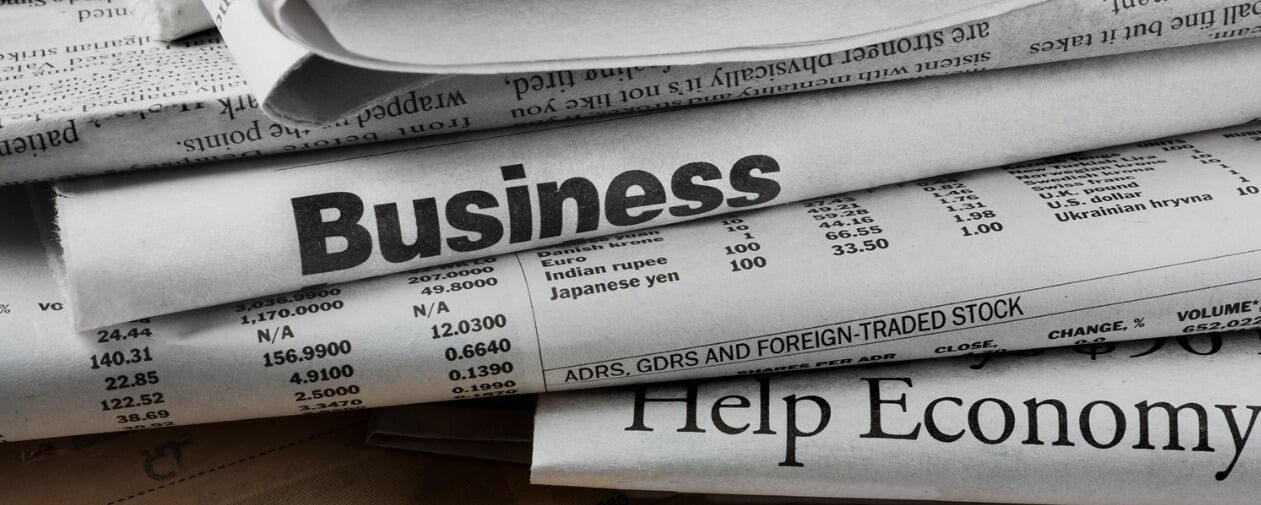Current concerns about inflation, recession, and rising interest rates are putting a dent in retail strategies and rattling future planning. Per a May release from the US Bureau of Labor Statistics, the Consumer Price Index, a measure of inflation, was up 4.9% from last April. But the 4.9% reflects a drop from the June 2022 year-over-year high of 9.1%.
In Deloitte’s 2023 Retail Industry Outlook, only a third of retail executives surveyed in October 2022 had confidence about maintaining or improving profit margins in turbulent times. Meanwhile, consumers are responding with erratic new spending habits that are hard to pin down.
Overall, spending has decelerated since late 2022, according to a McKinsey & Company report, U.S. Consumers Send Mixed Signals in an Uncertain Economy, in which 80% of survey respondents said they’re changing their shopping behavior by trading down. They are joining wholesale clubs, buying in larger packages, and purchasing private-label products. Nielsen data, according to the report, shows that private labels’ share of year-over-year sales growth among all consumer-packaged goods grew from roughly 15% at the end of 2021 to 30% at the end of 2022.
Retail pricing strategies are being challenged at every turn. Another report found that 72% of consumers compare prices on their phones while in store. But how much price sensitivity affects purchasing behavior differs depending on the customer segment. The same research report contends that among those who are struggling, 45% are switching from premium brands to cheaper ones, and 37% are limiting the number of times they purchase something special to treat themselves. Still, some shoppers continue to “selectively” splurge (mostly among high-income millennials), and those who do are becoming more selective in terms of the products they buy and the categories that inspire them to splurge.
And through it all, an Ernst & Young report puts a more optimistic spin on spending behaviors. Examining Consumer Price Index figures, the report claims that U.S. consumers will continue to do what they do best—consume.
- Only 36% say the rising cost of goods is making it hard to afford things, and 44% tend to buy nonessentials because it makes them feel happy.
- This is despite that American household debt hit a record $16.9 trillion at the end of 2022, up $2.75 trillion since 2019, according to the Federal Reserve.
What gives?
Ideally, brands should consider retail strategies that will help them ride out the storm but take a long-term view of what will carry them forward beyond the current economic situation.
There is light at the end of the tunnel. As you proceed, shine a light on these tactical retail strategies, and your future may look brighter than ever.
Recession Strategy #1: Optimize Omnichannel
Shoppers don’t distinguish between methods of browsing, price comparing, ordering, and purchasing. Whether digitally or in store, and on whatever device, they just shop. Since they see it as a single purchasing journey, retailers should do whatever it takes to assure consistency and unification from channel to channel. McKinsey finds that 81% of consumers—6% higher than last year—are researching and browsing across multiple channels before they buy. Integrating online, brick-and-mortar, and app shopping experiences makes for a more consistent and reliable shopping experience that satisfies more customers. It also makes sense to meld a brand’s website with a social media app, as an increasing number of shoppers—particularly Gen Z—prefer to compare reviews and make purchases during their social networking activities.
The flow from an in-store purchase to a retailer’s app to a social media site such as Instagram and back to the store again requires a mindset that invites seamlessness.
Recession Strategy #2: Adjust Prices Purposefully
While a knee-jerk response in a recession might be to adopt retail pricing strategies that involve lowering prices across the board, this retail tactic reflects short-term thinking that can potentially cut into profits, disrupt a brand’s retail positioning and overall integrity, and alienate loyal customers.
The Forbes Business Council advises a methodical approach to pricing, wherein items that customers consider more valuable have a stable price, and other items can be increased. Monitor market trends and consumer behavior to make appropriate adjustments. “This can help you maintain revenue with your core products (and keep customers happy) while still bringing in more profit on products that are less widely adored.”
Recession Strategy #3: Personalize Promotions
In a recent global survey, it was found that while consumer confidence is down, consumers will still spend. “They are looking to maximize value, whether that is the use they get, the price they pay, or the pleasure they derive.” Price-based promotions have always been popular, but in the current inflationary economic climate, it may be wise to focus them more sharply on necessities and consumables, and beef them up with a more personalized slant. This means offering rewards and discounts that tap into the individual shopper’s wants and needs and are contextually relevant. In fact, in an era where data is relatively easy to collect and readily available for instant analysis through advanced tools such as AI, there is no excuse for not personalizing offers. A recent survey shows that 70% of consumers spend more with companies that offer personalized, seamless customer experiences.
Make each offer intentional and engaging. Invite them to download your app in exchange for a gift card. Provide a time-sensitive coupon to motivate another purchase in the same category as a prior purchase. Set up and encourage a product subscription. Give them a percentage off on their next purchase in appreciation for their loyalty.
Promote products in a way that differentiates them from your competitors’ products. Even if they are very similar to a competing brand’s line, products can be presented as if they are an essential part of consumers’ lives.

Recession Strategy #4: Highlight Value
Now more than ever, consumers are seeking value in their purchases. Grappling with higher prices, they are stepping back to think about what a product can do for them before they buy. The situation, according to the authors of a recent retail trends blog, challenges brands to consider “broadening their offerings, improving the purchasing experience, and creating new loyalty programs.”
If the perceived value is high, customers may be willing to pay more. Of course, product quality has a significant impact. Still, customers must also be convinced that a brand offers them something special or fulfills a distinctive need and that a retailer provides excellent support for the brand. Retailers can focus on upgrading conveniences such as fast returns and free shipping. Brands can offer guarantees and warranties on their products and invite purchasers to become a member of their social community.
Because buyers are showing preferences for exceptional or more useful features in products, the concept of focusing on premium products is taking hold among brands. A recent Fortune.com article mentioned several companies that are introducing “designer” products and services that appeal to wealthier shoppers. “If you want to hedge against the economic challenges, you hedge your bets by chasing after the upper income,” said Marshal Cohen, chief industry adviser at market research firm Circana.
And aside from expanding luxury lineups, retailers should pay attention to what’s moving off the shelves and begin building visibility and promotions in high-growth categories. In other words, make what’s hot, hotter.
Recession Strategy #5: Strengthen Customer Engagement
As shoppers become more selective about pricing and product features, retailers are beginning to feel the squeeze of fiercer competition for the consumer’s dollar. Winners will realize that solidifying customer relationships, creating meaningful long-term engagements, and putting greater emphasis on positive shopping experiences can lead to a more favorable market position.
Post-pandemically, the customer has wrested control of the shopping experience and is now in charge. Continuously strive to meet their expectations and focus on experiential benefits, and long-term relationships are easier to maintain. Encourage social sharing of a positive brand experience, for instance; and reward customers for trying out your mobile app. Ask for their opinions and offer a free gift for completing a survey.
Whatever strategy you choose, it’s important to let customers know that you appreciate their business and care for their personal well-being, not just what’s in their wallets.
Convenience weighs heavily on consumer expectations. According to a recent report, 72% of customers want immediate customer service. The list of things retailers might do to accommodate this desire is long—for example, initiating a frictionless returns system, and establishing micro-fulfillment centers to fill orders faster and speed up deliveries.
Virtual assistants should definitely be on the list. Since customers get frustrated when they can’t obtain current, comprehensive information about a product from a retail associate, don’t understand the features, or can’t compare one brand or model to a competing brand or model—whether online or in the store—a tool such as AskMe® is ideal. It relies on a simple shelf or product tag with a QR code that the shopper scans. This instantly puts them in touch with a knowledgeable brand expert via text, video, or online, who can answer their questions in real-time.
Recession Strategy #6: Invest in Innovative Technologies
Relying on outdated processes and tools can blunt efforts to keep pace with the ups and downs in any economy. Collecting, storing, and efficiently analyzing data are critical to contributing to a successful shopping experience. It’s absolutely necessary that marketing, operations, merchandising, IT, and other teams collaborate to unify their processes and goals and share data across channels. This is key to obtaining a holistic perspective of the customer, thus making it easier to cater to their needs and desires. Technologies that allow tracking of data in real-time help retailers use information more effectively.
The consumer experience is the heart and soul of retail profitability today. If brands and retailers embed this concept in their strategic decisions, they should be able to weather market volatility and come out ahead, even during a recession.
Ready to talk?

Author: Karen Salamone
Karen is Head of Marketing for MarketSource. She is a transformational B2B and B2B2C leader with a history of building marketing organizations, content teams, and demand generation centers of excellence from the ground up. She is recognized for delivering meaningful insights and fresh approaches and for earning best-in-class content, design, and multi-media awards.
Want More Sales?
Subscribe now to receive occasional emails with insights that help you accelerate profitable growth, risk reduction, market expansion, and revenue velocity.
What are you waiting for?

